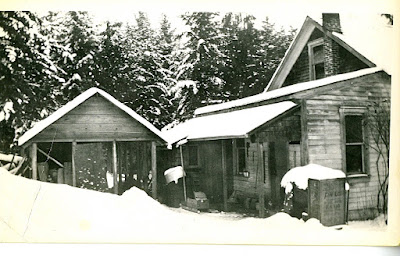A Story about your Father
As we prepare to leave our community at Canoe Point there are many farewell markers. One arrived after a weekend away, slipped right inside the front door, in true country fashion. This is the land of no locked doors. It was a lovely parcel and card, marking many years of being neighbours. It reminded me of the time when my “emergency to call list” had the closest neighbours listed and then 911. One of the gifts from people that have known your family for a long time are the stories. When I hear “I remember your father…..”, I feel his presence come into the room to sit and hear the tale as well. For that moment in time he comes alive through the story. The neighbour that left the parcel on the weekend had such a story that he had shared months previously. It had taken place during a time when our herds of cattle had mingled together over the summer on Bastion Mountain. It was late fall and we were doing the “check-in” as the cattle descended back to the barns in the hope of hay to supplement their summer grass diet. My father had a clip board with each cow’s number and a short description (alive, dead, dead calf, healthy calf). All the herd had been accounted for except for one, which my father resolved by stating, “ahhh yes, she has gone East”. The wranglers prepared themselves for a long search, heading East. My Father managed to clear up the cow’s status, no she had not “headed East”, but was in fact “deceased.” My Father never did lose his French accent that he came over from Switzerland with at the age of 18.
It is not only the stories that the neighbours can offer that will bring alive the past, but also simply the sound of a machine. These same neighbours also own one of my father’s most cherished machines, the “Skidder”. I was working in the yard during the summer when I heard a familiar drone. I knew immediately from the cadence that it was the Skidder. Our neighbours have retained it in excellent condition, it really looks no difference then it did when it left my father’s ownership.
The “Skidder”, August 2015.
There was a fleeting sense of a homecoming as the machine approached the barnyard. It was just so familiar, the sound, the smell. The feeling of anticipation of a project being completed with the arrival of such a competent machine.
The visits to your past that other’s provide when offered in kindness and respect bring comfort and a sense of grace to your present.


















































One Comment